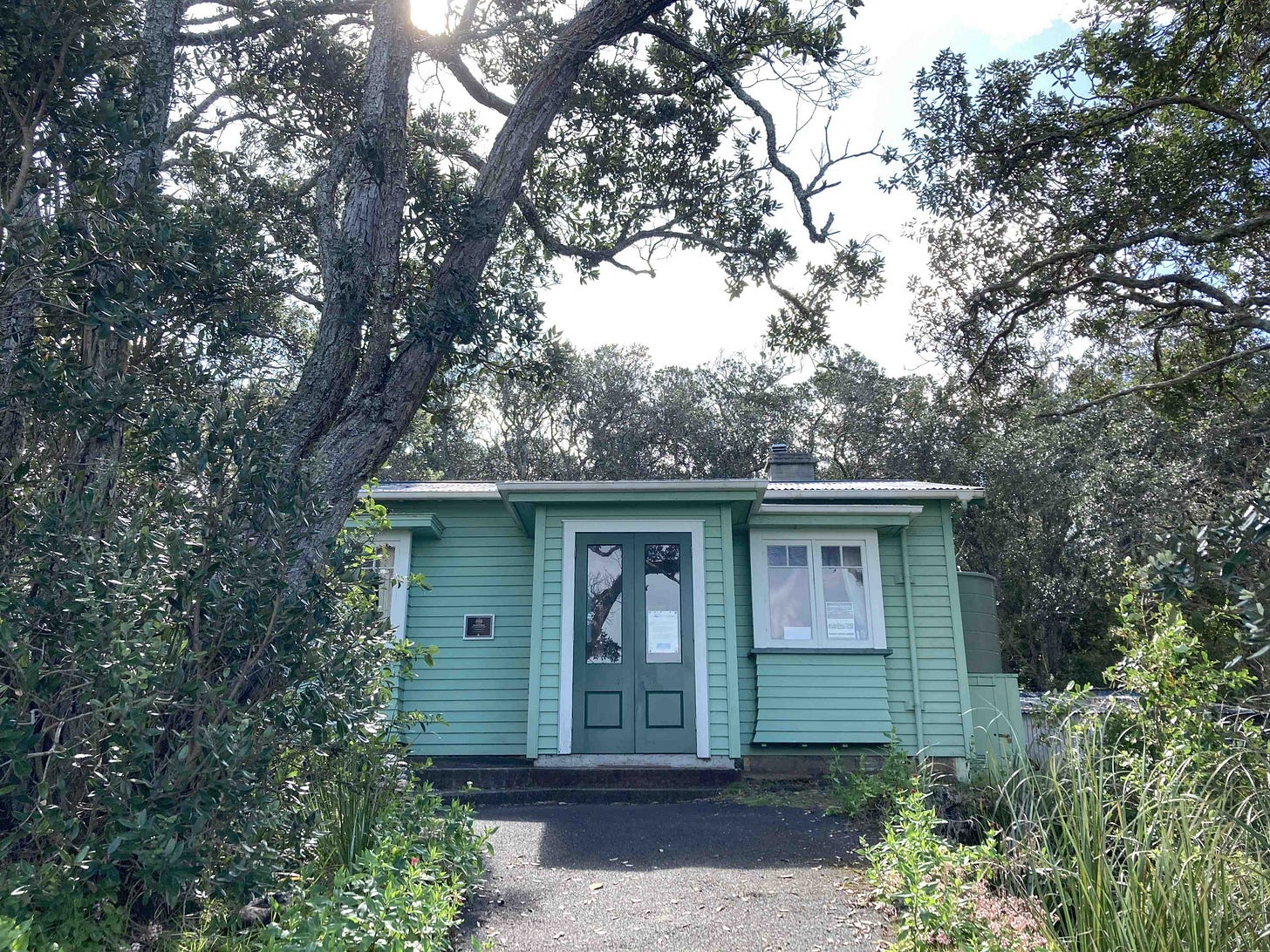A well-worn track
I return to an Auckland icon and wonder what has changed (4 minute preview, 9 minute full article)
Auckland’s skyline has changed beyond recognition in my lifetime, but Rangitoto’s distinctive profile prevails. I watch it come closer during the half-hour ferry ride from the central city to the island, and I realise that I’m taking a journey back in time. It’s been twenty years since I last visited Rangitoto, and nothing has changed. I see the same sea walls of red-brown scoria rock, built with prison labour in the 1920s and 1930s. I see the cute old baches (holiday houses) scattered around the coast, tucked in among the twisted forms of the pōhutukawa trees which make up most of the forest on the island. I follow the same path, also built with prison labour, as it rises gently through lava fields and patches of forest on the volcano’s lower slopes.
Everything looks the same, but it doesn’t sound the same. As I’m walking, I hear a bird call which sounds like hysterical laughter. It’s a bird which was once desperately endangered, a tīeke, or North Island saddleback. Because it is so sensitive to mammal predators, by the 1960s it was confined to a single island, Taranga, part of the Marotere or Hen and Chicken Islands. Taranga is 22 kilometres to the east of Bream Bay, and therefore beyond the swimming abilities of even the most determined stoat or rat.
Although it’s extremely vulnerable to mammal predators, in their absence the tīeke is hardy and adaptable. Before the staff of the New Zealand Wildlife Service saved the black robin in the 1970s, they developed their skills bringing the tīeke back from the brink by moving it to other islands. The North Island tīeke now lives on 18 islands and 6 mainland sanctuaries with predator-proof fences, such as Zealandia in Wellington.
The last time I visited Rangitoto, the island still had rats, mice, rabbits, stoats, feral cats and hedgehogs. The tīeke wouldn’t have stood a chance. Now, the forest has come alive with birdsong and it makes my heart sing too, because it tells me the forest is healthy. It isn’t only a single tīeke I hear. Further along the track, I hear another, and another. I even see one singing from a pohutukawa branch. I hear plenty of tūī and riroriro, too, and something else I can’t quite identify. I can’t be certain, because birdcalls aren’t my strength, but I think it’s a pōpokotea.
The first few times I visited Rangitoto in the 1970s and 1980s, the forest wasn’t only silent, it was dying. Possums, which love pohutukawa, were destroying the island’s most important tree. Rock wallabies, declining in their native Australia, were munching through the plants on the ground. But after catching some of the rock wallabies and sending them back to Australia, the Department of Conservation eradicated the possums and wallabies. So, by the time I did a couple of university field trips on Rangitoto in the early 1990s, the plants were coming back.
It was on one of these university field trips that I learned that there is something odd about Rangitoto’s pōhutukawa trees. Now, with my eyes attuned to subtle variations between plants, it’s obvious. But in those days, they all looked like pōhutukawa to me.
The pōhutukawa has a number of close relatives in New Zealand, most of which are native, but also including a few cultivated plants which have their origins in other Pacific islands. Most of the time, where pōhutukawa grows, there aren’t any of these closely related species around. But things are a little different on Rangitoto. A thousand years ago, where Rangitoto now stands, there was nothing but the waters of the Hauraki Gulf. Around 600-700 years ago, it erupted from the sea to form the island we see today. Once the scoria cooled, plants began arriving, carried by the wind or by birds.
Among the plants that arrived over the last 600 years were both pōhutukawa and its cousin the northern rātā. Although these are separate species, like many closely related plants, they can cross-breed and form hybrids when they grow together. What happened on Rangitoto is that the two cross-bred, and then the resulting trees all cross-bred, and so on, and so on, for generation after generation. As a result, the pōhutukawa on Rangitoto aren’t, strictly speaking pōhutukawa at all. They are what scientists call a hybrid swarm, which sounds alarming but is actually an important process in plant evolution.

One of my university field trips to Rangitoto looked at the hybrid swarm of pōhutukawa and rātā. I remember that we had to look at leaves from a number of different trees, and pay close attention to the leaf shape and size, whether the edges of the leaves rolled back and whether the leaves were hairy. So, as I walk along the track to the summit, I’m looking closely at the leaves. Most of the trees lean more towards pōhutukāwa than rātā, but I certainly spot a few which are definitely closer to rātā.
I learned something else on that field trip as well. All my previous visits had simply involved walking on the tracks. To study the hybrid swarm, we had to get off the track.



